Jamie Keshwara, four Nisa stores in and around Whittlesey, Peterborough
Protein bars are a great profit opportunity, says Jamie, thanks to their higher margins
Paul Gardner, Budgens of Islington, London
Health is such a big trend for Paul that he has both a juice and sushi bar in his stores that are doing a roaring trade
Sandeep Bains, Simply Fresh, Faversham, Kent
Sandeep is planning to devote full bays to the trending products such as protein, vegan and dairy-free in the near future
James Brundle, co-owner of four Eat 17 stores, in London, Kent and Bishop’s Stortford
James has noticed a rise in interest in functional food and drink
How health conscious do you think your shoppers are?
Paul: Very health conscious. They buy into all the different health trends. We sell so many products that claim to have all these different health benefits. I don’t even understand how some of these things are improving my health, but I’m told they are, and they’re tasty so I eat and drink them.
Jamie: I think they try to be. I think the main thing I sell at the moment is the Grenade protein bars. I discovered those by reading Convenience Store – a retailer was saying they were selling well so I thought I’d give them a go. The only problem is that they’re one of the few products that I have to go to cash and carry to buy. I don’t sell the Weetabix with added protein, or the other ‘normal’ products with added protein, because I don’t think people really believe that these are any healthier than the standard product as they still contain just as much sugar and carbs. The Grenade bars are low in sugar and carbs and are specifically aimed at people who are into their fitness.
Sandeep: Reasonably so; I would say about five out of 10 are. That’s because we’ve got such a mixed demographic of shoppers. We’ve got those who want to buy the more premium protein bars and the Graze snacks, and then those who just want to come in to get their 35p energy drink. Those that have more money tend to eat more healthily as those products seem to come at a premium.
James: We definitely have a lot of health-conscious customers, although they’re not necessarily dieters. We get a lot of people in buying kefir, kombucha, fresh fruit and vegetables, and vegan items. Consumers aren’t shopping for weight-loss items, but they do have health at the forefront of their minds.
What are the main health trends among your shoppers? Would you say that Millennials are the more health-conscious consumers?
Paul: A lot more people are cutting things out of their diets now. It’s almost fashionable to have an intolerance to something. Everyone’s gluten-free or dairy-free or lactose intolerant, or vegan. We sell lots of free-from products and our bottled drinks come with a whole range of health benefits, on top of the juices available at our juice bar. The juice bar is particularly popular because the guy at that counter will make something tailored to your health requirements. Cold-pressed is another big trend in the juices industry, where the ingredients aren’t cooked or heated so they retain their goodness. Millennials are very much our shopper base and these shoppers are definitely interested in health credentials and provenance. I think that’s why my butcher does so well; he knows where the meat has come from and shoppers trust him.
Jamie: The protein trend is the main one I can see in my store. I also think people are much more aware of their sugar consumption now as well.
Sandeep: Free-from and general healthy snacking are the main trends in my store. Customers are looking for the healthy snacks such as the Graze snacks, Grenade protein bars, and other more natural snacks such as chocolate-covered raisins and peanuts. People also still go for organic products.
James: We’re always being asked for dairy- and gluten-free alternatives to foods, so I would say that they are main health trends among our shoppers. I think Millennials are more aware of where their food comes from and the negative effects that processed food has on the body, so in that respect they are more health conscious and seem to buy ingredients to make dishes themselves. We do find that a lot of people, no matter what age they are, are always after something specific for their health or diet.
How have you changed the way you merchandise free-from products over the past couple of years?
Paul: We brought in a gluten-free section about five years ago when people kept asking us to get one. But back then the products looked very medicinal and all those people who had been asking for the products suddenly seemed to disappear, because the products just didn’t sell. We put some of the products within their categories instead, but they still didn’t sell. We then saw the trend coming back a couple of years later so put the bay back. By that point the products looked more appealing and they started to sell really well until the middle of last year when it became less of a draw for shoppers, because all the multiples started doing the same thing. You have to stay ahead of the trend to be a destination store for the products. We tried selling gluten-free Peroni within the beer category, but it didn’t sell so we moved it into the free-from section and it’s selling better there.
Jamie: I haven’t changed it much. I could merchandise the snacking products by calorie count. I always see people picking up the products and looking at the calorie and sugar content, and you see the special ‘under 600 calorie’ sections in restaurant menus. It would be interesting to see how it would work in the store.
Sandeep: We are going to change the way we merchandise our products as soon as we’ve got our supply from Co-op sorted. We will trim back the grocery products and make a specific bay for free-from and healthy snacking. It’s been difficult to do this with the supply chain being the way it is at the moment.
James: We have expanded our chilled vegan offering and made it more prominent within our stores. We also make sure we clearly label any cakes or pastries that are gluten-free, as we find that these have a high demand.
Do you think the health trend is having a negative impact on confectionery, or do you think that’s a completely separate mission?
Paul: I think these are definitely two very separate missions. I still sell a lot of chocolate. We also sell really premium and interesting products that you won’t find in the multiples.
Jamie: There’s not much innovation in confectionery, but there’s lots in protein products. We put the protein bars where they’re visible, next to the snacking section, so people can choose to replace their chocolate bar with a healthier option. The Grenade bars offer a 40% margin and retail at £2 a pop so you make a quid on each one – that’s a lot, so I’m quite happy for them to trade up to those products. Some people might be eating protein bars as meal replacements so that’s not so good for our sandwich sales. I sometimes eat one thinking I’ll eat it instead of a sandwich, but then I always end up eating a sandwich as well.
Sandeep: Yes, it is taking a bit away from chocolate bars, but that’s a good thing because the healthy products offer more margin.
James: People still recognise the importance of treating themselves even when they are eating healthily – but they are definitely more conscious of where their confectionery comes from and where the cocoa in their chocolate is sourced and so on, so they have become more selective in that respect.
What’s the wackiest health food product you’ve tried selling, and did it work?
Paul: I thought this kefir drink was bizarre when I heard about it. I mean, it’s essentially a fermented milk drink and doesn’t sound very appetising, but I tried it and really liked it, and people are buying it. I was then told about Biomel, the dairy-free coconut kefir drink, and I thought that sounded horrible and it was going too far. Then I tried the chocolate one and that is just amazing!
Jamie: The protein bars have been the most trendsetting products we’ve sold.
Sandeep: I haven’t tried anything really wacky.
James: The wackiest product we sell would probably be bee pollen, which has so many health benefits.
How do you see these trends evolving over the next few years? What do you think is going to be the next big trend in healthy eating?
Paul: I think vegetarianism and veganism will continue to grow. I’m going to make sure I’m better prepared for Veganuary next January as that is clearly growing in popularity. I might get in some new products and make a display – although I don’t want to encourage it too much as I don’t want it hindering my butcher’s profit. I think free-from is going to grow and grow, and I think it’s going to grow more into the chilled and fresh category as it’s very much in the ambient at the moment.
Jamie: I think the sugar tax will spur innovations in that sector and I think people will continue to become more interested in calorific content.
Sandeep: I can’t see the trend going any other way but up; free-from is going to get bigger and healthy snacking is going to get bigger. I can’t see that people are going to stop thinking it’s important to eat healthily or start buying foods they’re intolerant to. It’s definitely high in my mind as being where the future lies and I look forward to going big on it come June.
James: I think people are becoming a lot more realistic about healthy eating and aren’t buying into the fads so much. We’ll see an increase in the younger generation making meals from scratch and a focus on really good produce and ingredients, with consideration for animal welfare and environmental impact. We’ve been seeing a rise in the sales of non-dairy milks, especially oat milk. I also think fermented products such as kombucha and kimchi are on the rise.
Non-dairy
What dairy-free products do you sell, and how popular are these?
Paul: We sell loads. They’re really popular. We’ve got a whole chilled range from SoJade. I think you have to stock these things for a little while before they catch on, as you have to give your shoppers time to try them and let the word get around that you sell the products and then you can become a destination for them. It’s tough with chilled products as it does mean you suffer some wastage to start with, but it’s worth sticking it out.
Jamie: My brother actually put a small vegan section in the chilled area in January and it went really well.
Sandeep: Not many. However, we do stock a few of the dairy-free alternative milks such as the Alpro almond and coconut milks.
James: We sell a wide range of dairy-free products in all our stores, including seitan, tofu, dairy-free cheeses and dairy-free ganache pots and yogurts. These are very popular as veganism is a growing movement and vegan alternatives can be hard to track down.
Food to go
Have you made any efforts to make your food to go more healthy?
Paul: We’ve got a sushi counter, which is so popular with customers. It’s so fresh and tasty; people just love it. We also have the juice and smoothie bar and the guy that runs that really knows what he’s talking about when it comes to what different foods you should consume in order to heal different health issues. I have actually stopped eating breakfast at home and started having one of his smoothies every morning - they’re really good. Pollen + Grace do a great range of healthy ready meals. They’re not cheap, but they’re really fresh. They sell a protein box, an alkaline box, a chia pot, a vegetarian box and a vegan pot.
Jamie: I haven’t yet, but I probably should. This is a section where I could merchandise the products by calorie count.
Sandeep: We’ve got the Subway offer in-store and they are always evolving with new products such as salad bowls and things like that. But we still get in the builders and workmen who want the usual sausage rolls and cheese rolls.
James: We have recently expanded our own range of ready meals. These include vegan options such as vegan risotto, and all are made from scratch by our skilled chefs in the Hackney store kitchen, using the finest ingredients.















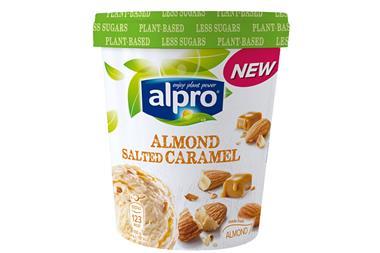


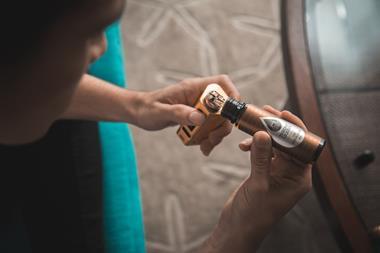
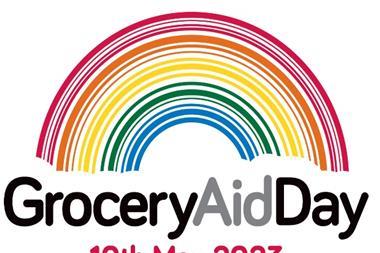

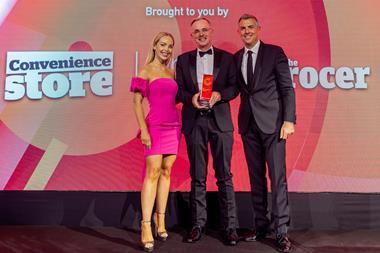
![C-Store_Champions_logo-CHOSEN[1] 2023](https://d2dyh47stel7w4.cloudfront.net/Pictures/380x253/6/5/7/301657_cstore_champions_logochosen12023_817064.jpg)

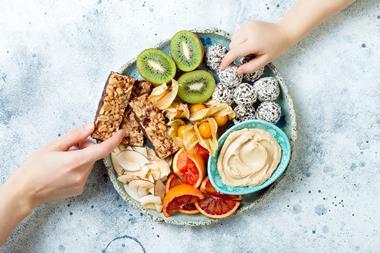


No comments yet